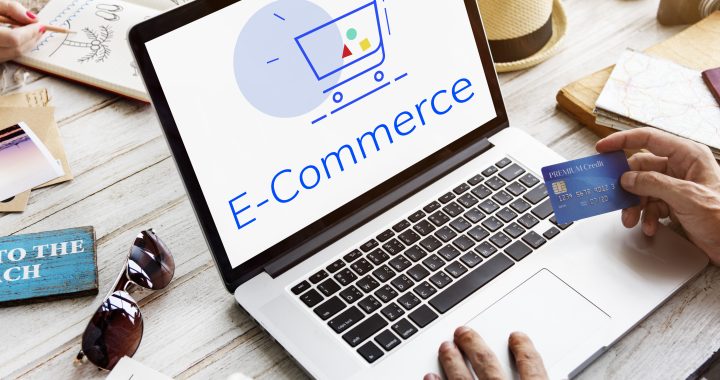The e-commerce landscape is rapidly evolving, with new technologies and customer expectations constantly reshaping the industry. Staying ahead of trends is essential for businesses looking to attract customers, improve the shopping experience, and stay competitive. Here, we’ll dive into the top e-commerce trends you need to know in 2024 and how your business can leverage them for success.
1. Artificial Intelligence and Machine Learning
AI and machine learning continue to revolutionize e-commerce by offering personalized recommendations, dynamic pricing, and more efficient customer service. AI-powered algorithms can analyze vast amounts of customer data to provide tailored product suggestions and anticipate customer needs.
How to Leverage This Trend:
- Personalized Recommendations: Use AI to display recommended products based on customer browsing behavior.
- Dynamic Pricing: Implement AI-driven pricing models that adjust prices in real-time based on demand, competition, and other factors.
2. Voice Search Optimization
As more consumers rely on smart speakers and voice assistants, optimizing for voice search has become a priority. By 2025, voice commerce is expected to become a multi-billion-dollar industry as people get more comfortable with ordering products through voice commands.
How to Leverage This Trend:
- Optimize for Natural Language: Ensure your product descriptions and keywords align with how people speak rather than type.
- Long-Tail Keywords: Incorporate long-tail keywords, as voice search queries tend to be more conversational and specific.
3. Augmented Reality (AR) Shopping Experiences
Augmented reality enhances the online shopping experience by allowing customers to visualize products in their own space or on themselves. From furniture to fashion, AR gives shoppers a better idea of the product’s fit or style before they buy, reducing the chances of returns.
How to Leverage This Trend:
- AR Product Previews: Implement AR features on your site so customers can “try” products virtually.
- Mobile-Friendly AR Tools: Ensure your AR experiences are optimized for mobile devices, where most users access e-commerce sites.
4. Sustainable Shopping and Ethical Consumerism
Consumers today are more aware of environmental and social issues, and they expect brands to reflect these values. Sustainable packaging, eco-friendly products, and transparency in sourcing are becoming crucial selling points for e-commerce brands.
How to Leverage This Trend:
- Highlight Sustainability Efforts: Share your eco-friendly initiatives and product sourcing transparency.
- Green Packaging Options: Invest in sustainable packaging solutions and let your customers know about it on your website.
5. Social Commerce
Social commerce—buying products directly from social media platforms—is on the rise, with platforms like Instagram, Facebook, and TikTok integrating shopping features. This trend allows businesses to reach customers directly in the apps where they’re already spending time.
How to Leverage This Trend:
- Shoppable Posts and Ads: Create engaging, shoppable content on social platforms where your target audience spends time.
- Influencer Partnerships: Collaborate with influencers to promote your products and drive traffic directly from social media to checkout.
6. Subscription-Based Models
Subscription models offer customers the convenience of receiving products regularly while providing businesses with a steady revenue stream. Subscription boxes are especially popular in industries like beauty, food, and wellness, where customers enjoy discovering new products regularly.
How to Leverage This Trend:
- Offer Subscription Options: Consider adding a subscription service if you offer consumable or replenishable products.
- Flexible Subscriptions: Provide flexible subscription options that allow customers to easily pause, skip, or customize their orders.
7. Buy Now, Pay Later (BNPL) Options
“Buy Now, Pay Later” options are becoming a popular payment method, particularly among younger consumers who prefer flexible financing. BNPL services allow customers to make purchases immediately while spreading payments over time without interest.
How to Leverage This Trend:
- Partner with BNPL Providers: Integrate BNPL options like Afterpay, Klarna, or PayPal Credit at checkout to give customers more payment flexibility.
- Promote BNPL Options: Highlight BNPL availability in your product listings and checkout process to increase customer convenience.
8. Omnichannel Shopping
An omnichannel approach combines online and offline channels to provide a seamless shopping experience across devices. Customers expect the ability to browse and purchase through multiple touchpoints—be it in-store, on social media, or through a mobile app—without disruptions.
How to Leverage This Trend:
- Unified Customer Experience: Ensure consistency across your website, social media, and physical stores.
- Click-and-Collect Options: Offer buy-online, pick-up-in-store (BOPIS) options to give customers flexibility in how they shop.
9. Faster and Flexible Delivery Options
With giants like Amazon setting delivery expectations, fast and flexible delivery options are now expected by customers. Same-day and next-day delivery, as well as flexible delivery time slots, have become standard for competitive e-commerce businesses.
How to Leverage This Trend:
- Partner with Reliable Delivery Services: Offer multiple delivery options that cater to different customer needs, such as same-day or weekend delivery.
- Communicate Delivery Times Clearly: Set realistic expectations for delivery times and keep customers updated on their order status.
10. Advanced Data Privacy Measures
With increasing concerns over data privacy, customers want to know that their personal information is safe. Implementing robust privacy policies and complying with regulations like GDPR is crucial for building customer trust.
How to Leverage This Trend:
- Transparency: Be transparent about how you use customer data, and clearly outline your privacy policies on your website.
- Data Security Investments: Invest in secure payment gateways and robust encryption to protect sensitive information.
Conclusion
The e-commerce landscape is evolving faster than ever, with trends driven by technology and shifting consumer expectations. By adopting these top e-commerce trends, businesses can improve the customer experience, boost brand loyalty, and increase revenue.
Ready to take your e-commerce strategy to the next level? At thedigitalmind.in, we stay on top of the latest trends and can help you build an e-commerce presence that’s both competitive and future-ready. Contact us today to learn how we can support your e-commerce success in 2024 and beyond.
